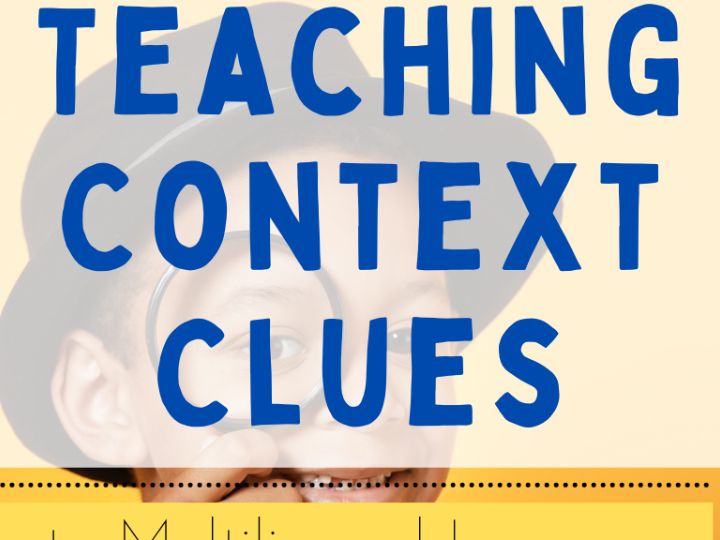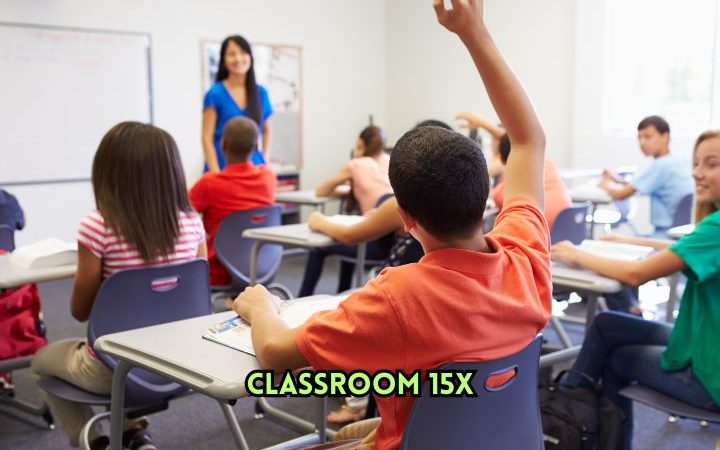Teaching Context Clues: Unlocking Reading and Writing Skills

Ever read something and hit a word that made you go, “Wait, what does *that* mean?” You’re not alone. We’ve all been there—staring at a sentence like it’s a riddle wrapped in a mystery inside an enigma. But here’s the secret sauce: context clues. They’re like the breadcrumbs authors drop to help us find our way. When students learn to pick up on these clues, it’s like giving them a literary flashlight. Suddenly, those dark and twisty passages light up. So, let’s dive into how Teaching Context Clues can make a world of difference in both reading and writing.
The Magic Behind Context Clues
What Are Context Clues, Really?
Context clues are the little hints authors sneak into their sentences to help you figure out tough or unfamiliar words. Imagine trying to understand a joke without the punchline—that’s what skipping context clues feels like. These hints can come in many forms: definitions, examples, synonyms, antonyms, or even a general sense of the sentence. When you teach students how to spot these, you’re not just building vocabulary. You’re building confidence.
Why Bother? The Real Value of Context Clues
Boosting Comprehension Instantly
Reading isn’t just about decoding words—it’s about understanding them. When students know how to use context clues, they stop skipping over confusing words. Instead, they become detectives, piecing together meanings from the surrounding text. That habit doesn’t just make them better readers. It makes them better thinkers.
Types of Context Clues (And How to Spot Them)
Definition Clues
Sometimes, the answer is right there in the sentence. Authors may define a tricky word directly: “Arboreal creatures, such as monkeys and squirrels, live in trees.” Boom. “Arboreal” means tree-living. Easy win.
Synonym Clues
These are the “Hey, it’s kinda like this” hints. Example: “The child was elated, or very happy, after winning the spelling bee.” See how “very happy” clears up “elated”? That’s your synonym clue at work.
Antonym Clues
Flip it and reverse it. Sometimes authors drop an opposite to help you get it: “Unlike his gregarious sister, who loved parties, Tim was introverted and shy.” By knowing what “gregarious” means, you can figure out “introverted.” It’s like word math.
Example Clues
Think of these like showing instead of telling: “Celestial bodies, such as the sun, moon, and stars, light up the night sky.” Those examples give away what “celestial” means without actually saying it.
Inference Clues
This is where it gets a bit trickier—but also more fun. You’re using the vibe of the whole sentence or paragraph to guess the meaning. It’s like reading between the lines, a skill that really flexes your brain.
How Context Clues Improve Writing
Building Better Sentences
When students understand context clues, they don’t just read better—they write better. They learn how to build sentences that gently guide their readers, using strong supporting words that create clarity instead of confusion. That’s storytelling gold.
Writing for the Reader
Teaching students to use context clues in their own writing trains them to think about the reader’s experience. That’s how good writers are made: by asking, “Will this make sense to someone else?” It’s empathy on the page.
Hands-On Strategies for Teaching Context Clues
Use Anchor Charts
Visual aids are a game changer. Make a chart that shows each type of context clue with examples. Hang it on the wall. Refer to it often. Students will start using it as a go-to reference like their favorite cheat code.
Model the Thinking Aloud
Don’t just tell students what a context clue is—show them how to find it. Read a passage aloud and literally talk through your thought process. “Hmm…I don’t know this word, but this part says…” Students will start copying that inner monologue. And that’s exactly what you want.
Create Sentence Detective Activities
Turn it into a game. Give students sentences with tricky words and have them circle the clues. Bonus points for identifying the clue type. When learning feels like a puzzle or a mystery, kids lean in hard.
Practice with Purpose
Repetition matters. But it shouldn’t be boring. Mix it up with task cards, scavenger hunts, or context clue “escape rooms.” Keep the energy high, and they’ll start to absorb the skill without even realizing it.
From the Page to Real Life: Making It Relevant
Connecting Context to Everyday Life
We use context clues all the time—even outside of reading. Ever figure out someone’s mood based on their body language? Or guess what a new slang word means from how your friends use it? That’s real-world context in action. Show students that this skill isn’t just academic—it’s life-ready.
Encouraging Curiosity
Context clues teach kids to wonder. To pause. To think, “What does that *mean*?” And then try to solve it without running to a dictionary. That habit of inquiry is what fuels lifelong learners.
Common Pitfalls to Avoid
Assuming Understanding
Just because a student guesses the right meaning doesn’t mean they understood *how* they got there. Always ask for the “why.” If they can explain the clue they used, you know the skill is clicking.
Overloading the Lesson
Don’t throw all five clue types at your students on day one. Start with one. Practice it. Add another. Build gradually. Otherwise, it’s like drinking from a fire hose—and nobody wants that.
Ignoring Writing Practice
It’s easy to focus only on reading when teaching context clues, but writing is where the magic sticks. Challenge students to use context clues in their own writing—that’s when you know they really get it.
Quick Reference Table: Types of Context Clues
| Type | How It Works | Example |
|---|---|---|
| Definition | Explains the word directly | “Arboreal creatures, such as monkeys, live in trees.” |
| Synonym | Gives a similar word | “He was elated, or very happy.” |
| Antonym | Provides the opposite meaning | “Unlike his cheerful brother, Mark was sullen.” |
| Example | Offers a list of similar items | “Celestial bodies, such as stars and planets…” |
| Inference | Uses clues in the overall sentence | “After a long trek, she looked gaunt and weak.” |
Assessment Ideas That Actually Work
Exit Tickets with a Twist
Give students a sentence and ask them to identify the tricky word, the clue, and the meaning. It’s quick, it’s effective, and it gives you insight into who’s really getting it.
Reading Journals
Encourage students to keep a journal where they write down unfamiliar words they encounter, the sentence they found them in, and what they think they mean (plus why). It builds metacognition like crazy.
Peer Teaching
Nothing cements a skill like teaching it. Pair students up and let them explain context clues to each other using examples from their own reading or writing.
Conclusion: From Guesswork to Greatness
Teaching context clues isn’t just about decoding words. It’s about unlocking meaning, fostering independence, and building readers and writers who *think*. When students stop relying on someone else to tell them what a word means and start figuring it out themselves, it’s like watching training wheels come off. Sure, they might wobble at first. But pretty soon, they’re cruising. And isn’t that what we’re all aiming for? So go ahead. Hand them the flashlight. Show them the breadcrumbs. Let them solve the riddle. Because once they get the hang of context clues, there’s no stopping where their words can take them.






